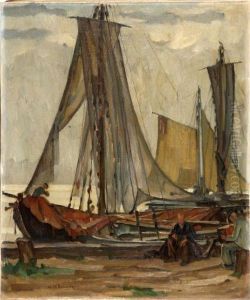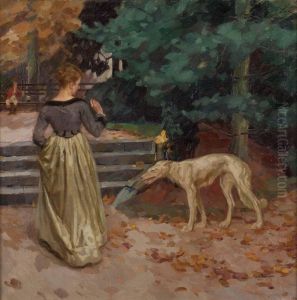Willy Hugo Demmler Paintings
Willy Hugo Demmler was a German artist known for his work as a painter, printmaker, and illustrator. He was born on July 23, 1892, in Zittau, Saxony, Germany, into an era where the European art scene was undergoing significant changes with the emergence of various art movements such as Expressionism and Dadaism. Demmler's early life, like many artists of his time, was influenced by the cultural and political milieu of pre-World War I Germany, which would later impact his artistic direction.
Demmler served in World War I, and his experiences during the war had a profound influence on his work. After the war, he returned to a changed Germany, marred by political upheaval and economic instability. It was during this interwar period that Demmler developed his artistic style, which reflected the broader trends in German art, particularly the New Objectivity movement that emerged as a counterpoint to Expressionism. This movement was characterized by a return to pragmatic realism and often depicted the social realities of the Weimar Republic.
He attended the Academy of Fine Arts in Dresden, where he honed his skills and was exposed to a variety of artistic influences. Demmler's work often focused on landscapes, cityscapes, and portraits, rendered with a sense of precision and clarity. He exhibited his work throughout Germany and gained a modest level of recognition during his lifetime.
Despite the turmoil of World War II, Demmler continued to produce art, although the period was difficult for artists in Germany. The rise of the Nazi regime and its strict control over artistic expression had a stifling effect on many, including Demmler. Nevertheless, he managed to navigate these challenges and continued to work until his later years.
Willy Hugo Demmler died on April 4, 1971, in his homeland. While he may not be as widely known as some of his contemporaries, his contributions to German art provide a unique perspective on the era he lived through. His works are held in several regional collections and continue to be appreciated by those interested in German art history, particularly in the context of the early 20th century.

